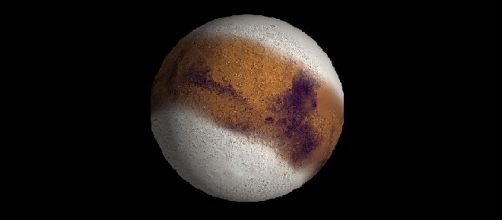Ice age record on the polar caps
Images from radar on Mars have revealed the most recent ice age on the planet. Based on these new findings, the most recent glacial age may have ended approximately 400,000 years ago. Scientists used radar images from Mars Reconnaissance Orbiter for the analysis of the layers of ice and dust that cover Mars´ Polar Regions.
Scientists discovered that layers covering the entire north ice cap accrued very rapidly, compared to the bottom layers. They show features of erosion, which follow a period of rapid accretion.
They recognized a boundary that encompasses the whole north polar cap; above it, the layers accrued uniformly and fast, while the layers below it did not.
Evidence of past ice age
During the analysis of an image taken by the Shallow Radar (SHARAD) instrument of NASA´s Reconnaissance Orbiter, scientists discovered that the top layered polar ice cap reveals an ice age and an immediate inter-glacial period. While some layers move in one direction below a boundary on the ice cap, other layers reverse direction above the same boundary. This reveals changes in ice accumulation and wind patterns that are related to climate change.
The seasons
Mars and Earth´s seasons are alike due to their similar tilts; however, the durations of the seasons on each planet are different because the rotational period of mars around the sun is twice the one of earth.
Temperatures on mars vary from -140 °C (-220 °F) in the winter to highs that reach 35 °C (85 °F) during the summer. The ample range in low and high temperatures is due to a thin atmosphere, low atmospheric pressure, the incapacity of Mars soil to store heat and the distance from the sun.
Mars comparatively large eccentricity, along with its orbit, which is almost twice as that of the earth and its tilt (25.19°) may account to the long and extreme seasons on its surface. It´s thought that the orbit of Mars has been getting more eccentric over the past thousands of years due to gravitational pull of other planets.

